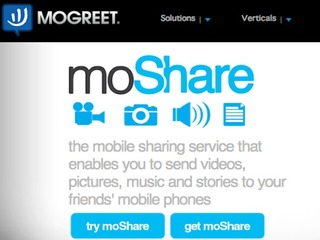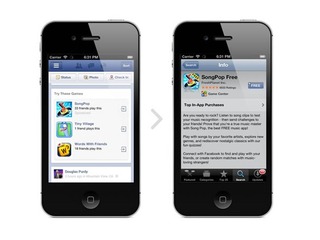Global AI in healthcare market expected to rise to $164B by 2030
The market size for 2023 was $10.31 billion
Read more...
(Updated to reflect comment from Medialets)
It’s no secret that the Internet is going mobile, and where there is Internet there is going to be advertising. Most websites and platforms have not figured out how to integrate advertising onto their mobile sites and apps, and there is where services like mobile media ad platform Medialets come in.
The company has raised $10 million Series C from Greenspring Associates, it announced on its blog Wednesday.
This money brings Medialets total fundraising to $28.4, including an $8.4 million round of equity in November 2011. Past Medialets investors include DFJ Gotham Ventures, 500 Startups, and Foundry Group.
Medialets says that it use the funding to accelerate the growth of its mobile and tablet advertising platform.
In an interview with VatorNews, Medialets CEO Eric Litman said that the company will be expanding into European markets, using its London office as a starting point, and will also be adding people to the engineering team, though there is no specific number of job openings.
What does Medialets do?
Medialets' mobile ad platform technology selectively targets advertising to users based on their mobile activity. It enables measurable mobile rich media through an infrastructure that Medialets says “brings greater efficiency and scale to campaigns across different devices and platforms," the company says on its website.
The Medialets platform supports mobile display, including rich media, video and static banners, on both iOS and Android devices, as well as mobile apps and sites.
Since marketing on mobile can be difficult, Medialets says, its mission is to make it easier “by providing marketers and publishers with a single solution that addresses every nuance of mobile throughout each phase of a mobile advertising campaign," Litman wrote in the blogpost.
“It’s an approach that has been very well-received in the market; through the first nine months of 2012, Medialets’ buy side business more than tripled compared to the same period in 2011. This additional funding enables us to quicken our pace of growth domestically and internationally, helps us to build a world-class service organization and creates opportunities for us to consider a wide range of strategic growth options."
Founded in 2008, New York City-based Medialets has powered mobile ad campaigns for more than 300 large publishers, including BBC, BSkyB, CNN, ESPN, The New York Times, The Wall Street Journal, The Weather Channel and Yahoo.
Litman told VatorNews that there not many similar services out there like Medialets, who do long sale cycles, simply because there are not that many customers to win.
The reason he says that Medialets is good at what it does is because it has only ever dealt with mobile, and does not have a legacy in providing services for desktops. even years ago, before mobile became the go-to platform for apps and services, Litman says he could follow the thread and see that that was where it was going.
"There was the recognition that mobile would be everything," Litman said, "that it would become the media platform over the next few years."
The trouble with mobile advertising
Part of the problem with mobile advertising is companies having no idea how to engage their audience on a smaller screen, and how to get them to watch advertisements without alienating them.
For a good example of a company that was once the poster child for a popular website having no idea how to advertise on a smaller screen, and one that has recently found ways around the problem, take a look at Facebook.
In a pre-IPO document filed with the SEC in May, Facebook explicitly said that it does "not currently directly generate any meaningful revenue from the use of Facebook mobile products, and our ability to do so successfully is unproven."
But, Facebook found ways around this problem. In August, Facebook launched mobile ads for apps, which allowed app developers to advertise on News Feeds on Facebook’s mobile app.
The ads appear in user News Feeds as what looks like suggestions, or recommendations, for which apps a user may like. For example, it may come under the header "try these games." Once a user clicks on one of the ads, or suggested apps, they will be redirected to either the iOS App Store or to Google Play to purchase that app.
The service was such a big success, that during his interview at the TC Disrupt conference in September, Facebook CEO Mark Zuckerberg said that the mobile ads were actually doing better than those on desktop.
On desktops, Facebook has the ads that appear on the right hand column. "It’s been great," he said. "We built a multi-billion dollar business by doing that.”
On mobile, though, Facebook can’t structure its ads the same way, simply because there isn’t room on the screen, so the ads have to be more integrated. In a way, they have to act more like TV: they have to be high quality, and integrated into the experience.
The reason it was so hard for companies like Facebook to transition to mobile, Litman says, is because they did not put the money into it.
"It takes time for markets to move and change," he said. It takes a lot of testing and experimentation to get it right, and if the money is not allocated for it, the transition will be slow.
Facebook can be seen as a template for what services like Medialets do: they figure out ways to optimize advertising on platforms that have, until recently, seemed like a complete mystery.
The market size for 2023 was $10.31 billion
Read more...At Culture, Religion & Tech, take II in Miami on October 29, 2024
Read more...The company will use the funding to broaden the scope of its AI, including new administrative tasks
Read more...




